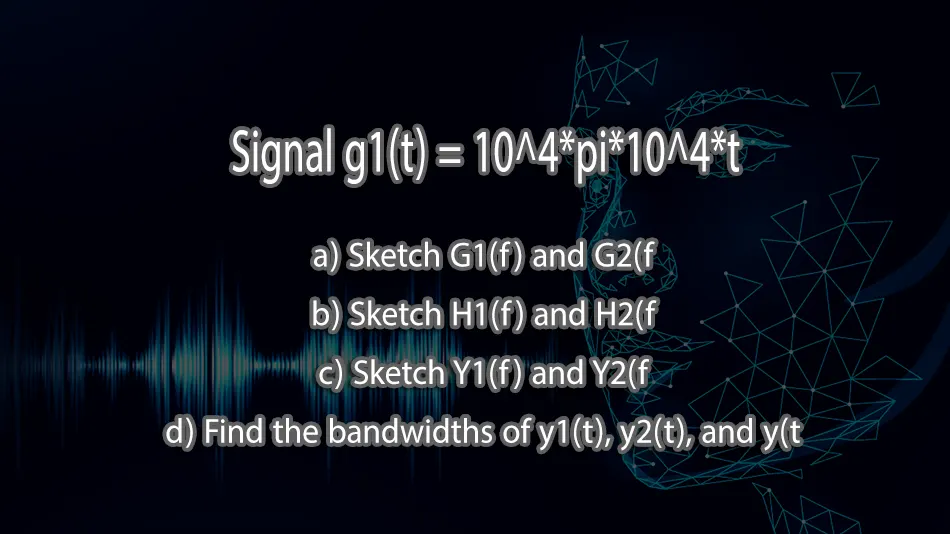Solution:
As the message signal is: m(t) = cos*2*pi*t.
While the frequency is = 1 Hz. and Time Period = 1 sec.
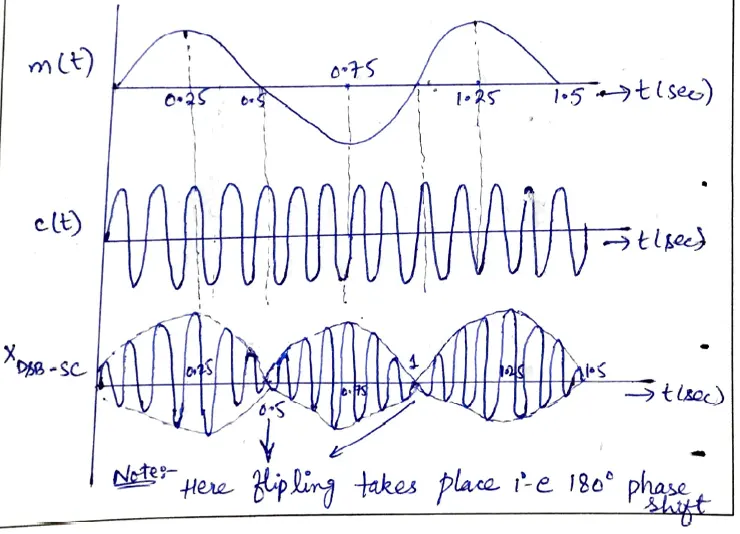
b) The DSB-SC signal of part (a) (above question) is applied at the input of an envelope detector. Show that the output of the envelope detector is not m(t), but |m(t)|. Show that, in general, if an AM signal [A + m(t)] cos(wct) is envelope-detected, the output is |A + m(t)|. Hence, show that the condition for recovering m(t) from the envelope detector is A + m(t) > 0 for all ‘t’.
Solution
First, the DSB-SC signal generated in part (a) is provided to the envelope detector e.g., given in the following figure:
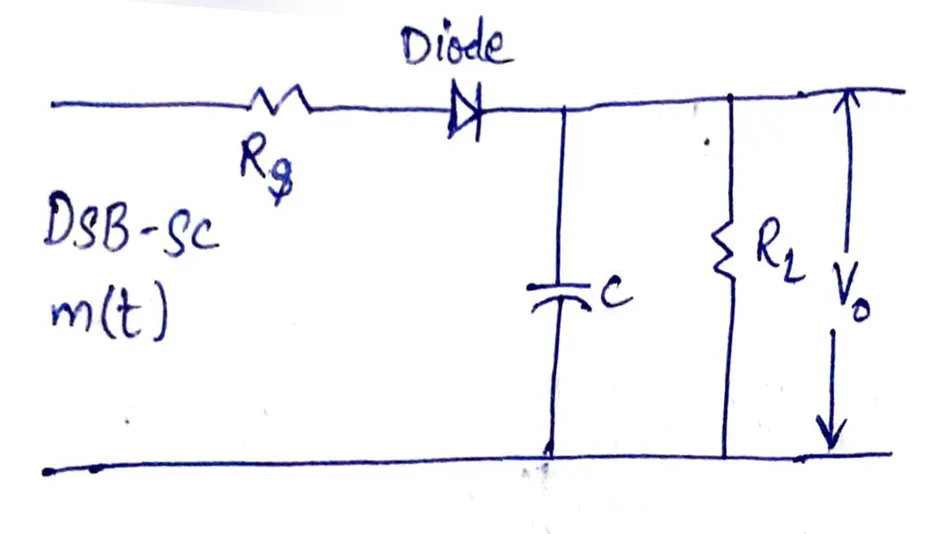
The function of the envelope detector is to identify the envelope of the given (input) signal.
Envelope:
It is the waveform created by joining all the positive as well as negative peaks of the waveform e.g.,
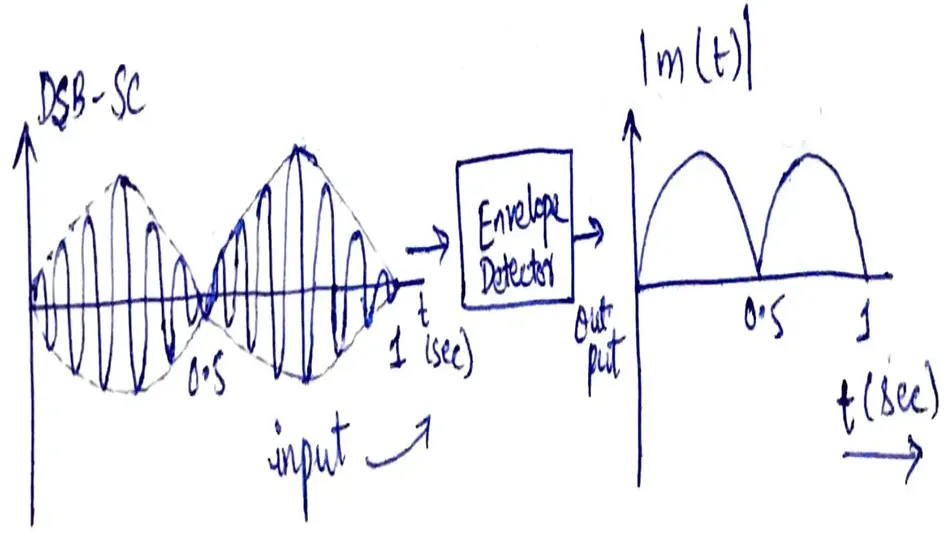
Explanation:
As the diode conducts just the upper half of the AM signal furthermore due to charging as well as discharging action the output waveform will be |A + m(t)|
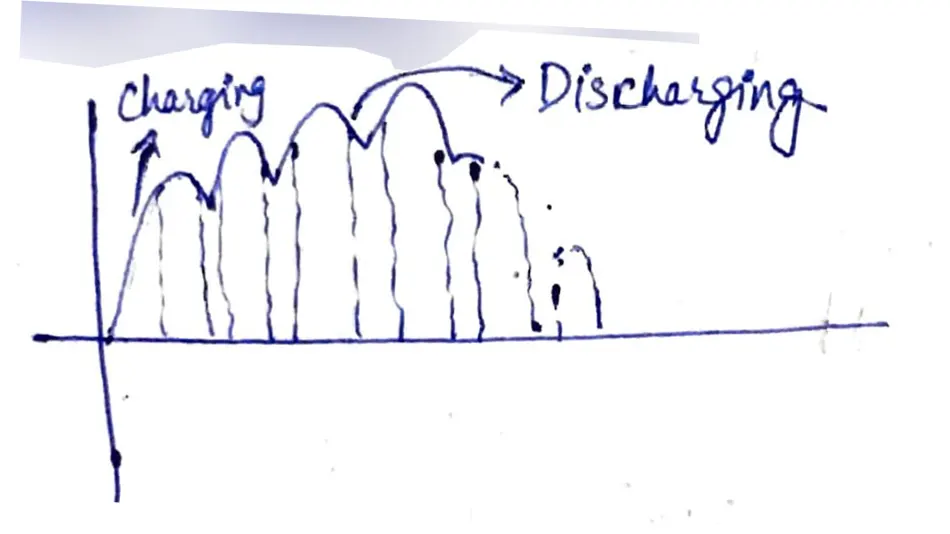
As shown in the figure above, the output of the envelope detector for [A + m(t)]cos(wct) (or [A + m(t)]cos(2*pi*fct) is |A +m(t)|.
Condition for retrieving the message signal is:
1/fc < RLC < 1/fm
where,
fc = Carrier Signal Frequency.
RL = Load Resistance.
C = Capacitance.
So, if RLC > 1/fm then:
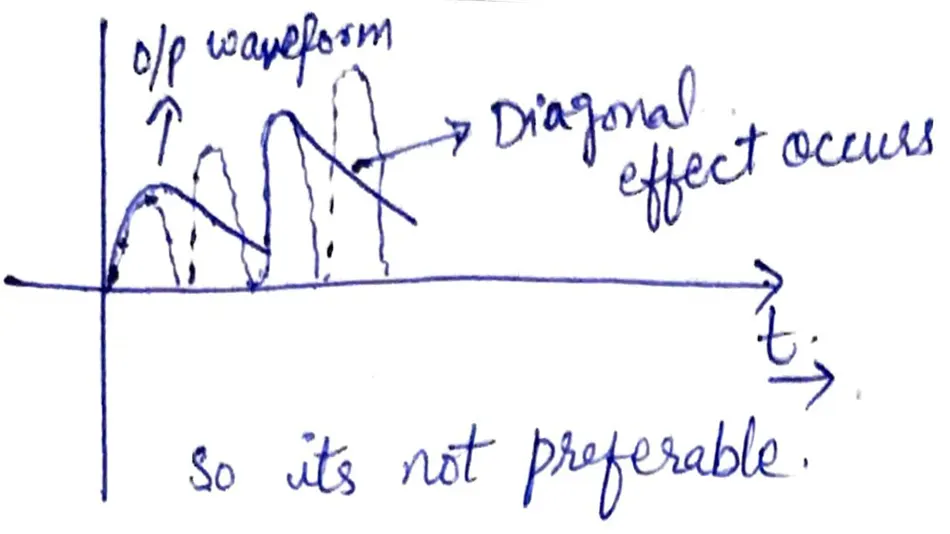
if RLC < 1/fc
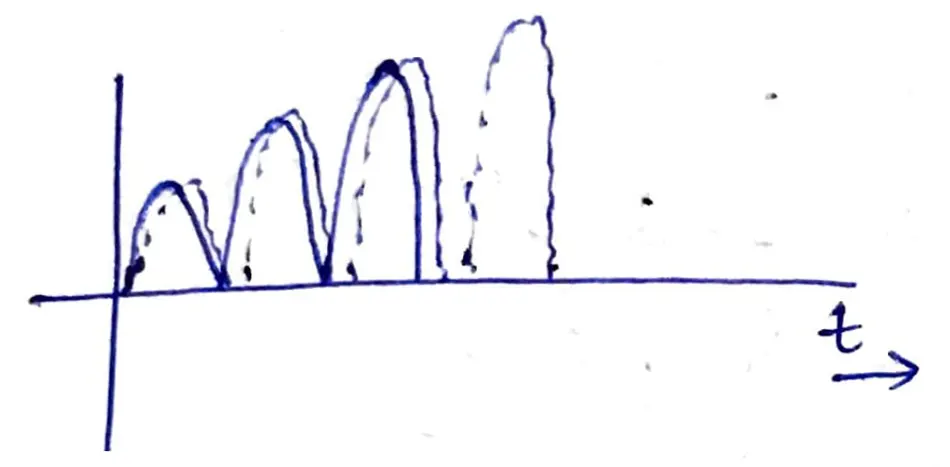
Here output waveform fastly discharge therefore, the output is not capable to follow the message signal
So, the superior condition is:
1/fc < RLC < 1/fm

